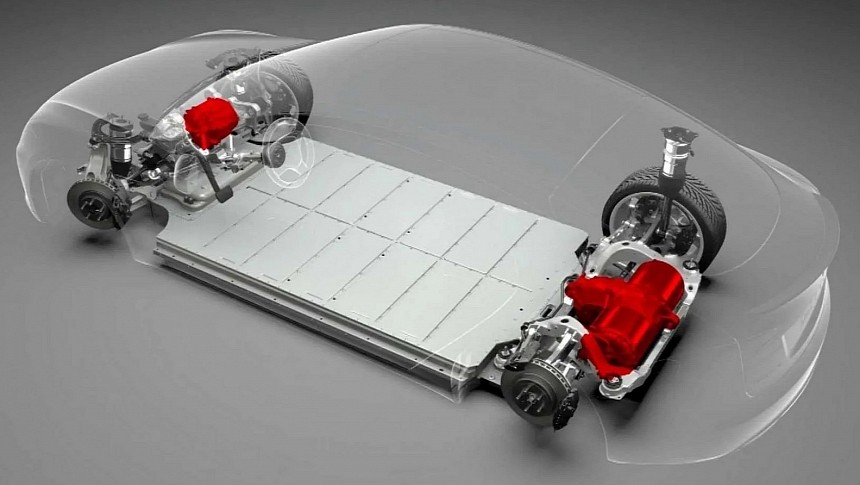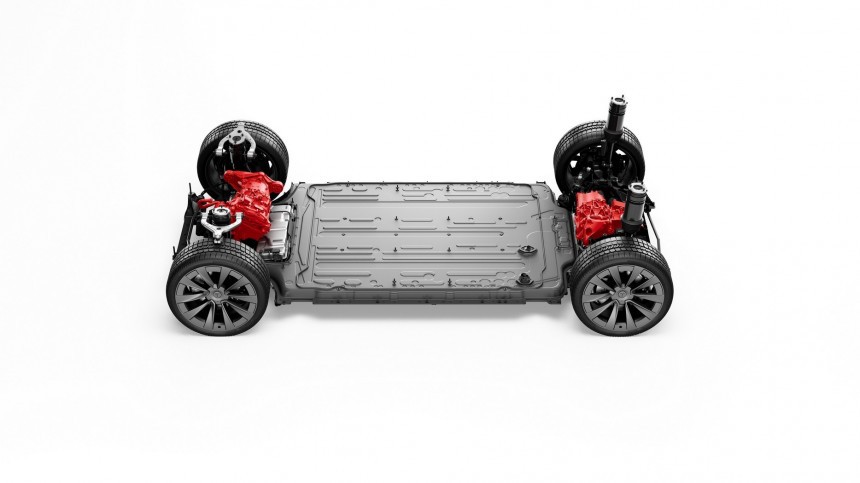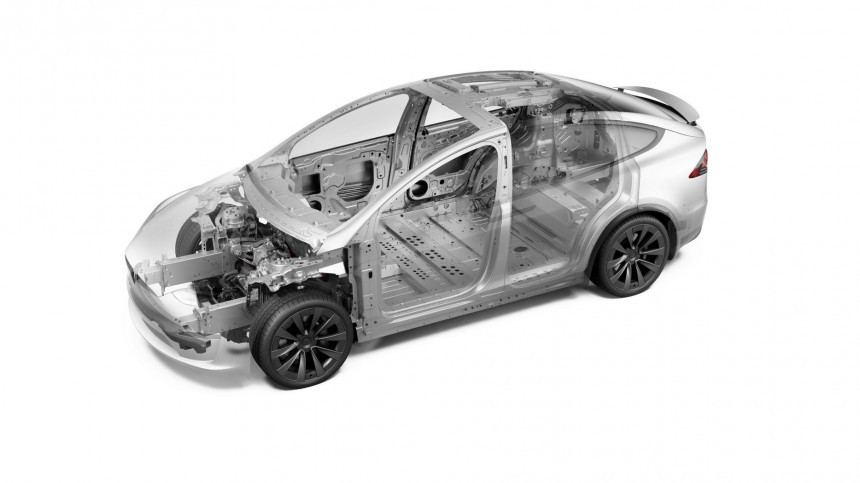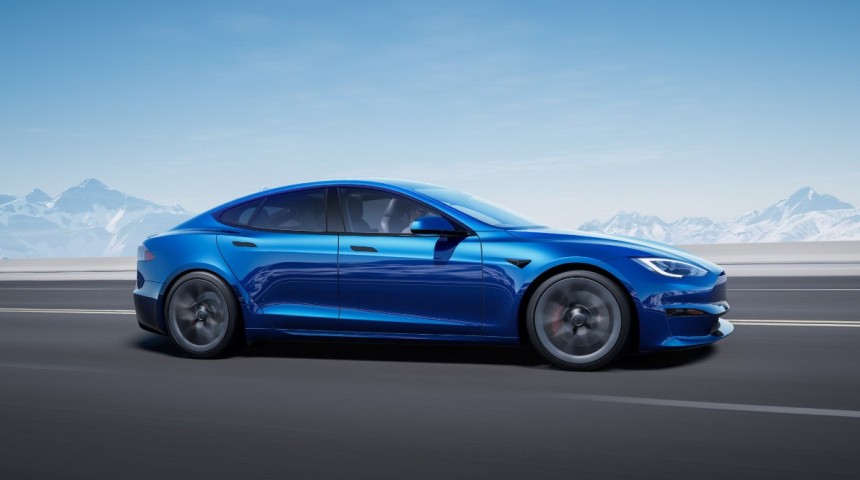When Tesla started reducing prices, its usual advocates thought it was a fantastic move to increase sales. Some even parrotted Elon Musk's surreal excuse for that: that "demand at scale is limited by affordability," so Tesla had to sell cheaper cars. Sure, everything is limited by affordability, but nobody sells a $100,000 car for $50,000 because that's a limitation: you develop a vehicle that will cost $50,000. Tesla has a small, aging lineup issue that made its inventories get close to 100,000 cars. One of the most bizarre solutions the BEV maker came up with for it was a Standard Range version for the Model S and Model X.
The derivatives themselves are not bad, but the way they were conceived is: a range cap through software. Electrek managed to confirm that the new vehicles are software-locked. In other words, they use the same battery pack as the Long Range, which can allegedly run 405 miles on a full charge for $88,490 if the vehicle in question is the Model S. I say "allegedly" because Edmunds already proved most Tesla vehicles fail to achieve their EPA ranges. To add insult to injury, Reuters disclosed that Tesla rigged range estimates for them to look superior to what they really were, even in the worst conditions. The BEV maker also created a team to dismiss complaints based on range disappointments.
The Model X has a 348-mi range – according to EPA – and costs $98,490. The Model S Standard Range can theoretically drive for 320 miles and costs $10,000 less, or $78,490. The same discount applies to the Model X Standard Range ($88,490), which presents a theoretical EPA range of 269 miles.
I invite you to analyze this from a cost perspective. The 100-kWh battery pack on the Long Range is quite expensive. Tesla charges $20,000 for 85-kWh components, so the 100-kWh must be even more costly. A car with a smaller range should have a high-voltage accumulator with fewer cells, which would save Tesla several thousand dollars.
Customers would also benefit from that because the battery pack would be lighter. Without as much mass to move, the BEV would travel further with the same amount of energy. For you to better visualize this, imagine a battery pack that weighs 625 kilograms (1,378 pounds) and contains 100 kWh but delivers only 85 kWh due to software restrictions. It will hold back the vehicle compared to one that tips the scale at 544 kg (1,199 lb) and delivers the same 85 kWh. The 100-kWh presents an 81-kg (178.6-lb) penalty. It is as if it was always carrying a tall adult as a passenger.
Tesla could have given the Model S and Model X lithium iron phosphate (LFP) cells. According to Our Next Energy (ONE), they are 25% more affordable than ternary cells. That would justify Tesla's discount on these vehicles' prices, even if developing such a battery pack would require some investments. They would pay off in the long run (if Tesla had any intention of offering Standard Range vehicles for more than a few months). Let me stress this once again: a software lock does not cut costs.
In other words, Tesla created these Standard Range versions as an excuse to offer $10,000 discounts on its older vehicles. It has done that before without any justification, so why do it now? Perhaps the inventories are so high – and demand for the Model S and Model X is so low – that Tesla had to devise another strategy to make its older vehicles more attractive.
The perspective of eventually unlocking the full potential of the battery pack may become the siren call for potential customers. They may buy the Standard Range with that in mind. If they can do so in a few years by paying less than the $10,000 discount they are getting now, these prospective buyers will feel they made a hell of a deal. But did they, especially with a vehicle that was introduced in 2012? People in love with the Model S may prefer to buy a used one – still under warranty – especially after Tesla's pricing strategy made their prices nosedive.
This all would make more sense if the discount made the Standard Range derivates eligible for the federal tax credit under the Inflation Reduction Act (IRA). However, passenger vehicles have to cost up to $55,000, and SUV price tags must not exceed $80,000. That did not happen with Tesla's latest price cut – which is precisely what the new derivatives are, regardless of what the BEV maker wants to say they are.
For Tesla fans, the sad part is that the more affordable Model S and Model X versions do not solve the issues I mentioned at the beginning of this text. Its lineup is still one of the oldest ones in the car industry, being beaten only by Lada's – if the Russian automaker still counts for anything. Until Q2 2023, inventory numbers also kept growing. There is no sign that any discount will stop that, even one so disguised as this one for Tesla's oldest vehicles. The BEV maker needs to lower production for inventory numbers to drop.
If Tesla wants higher manufacturing numbers, it should launch new and more affordable products to have a broader lineup. The company should also improve quality control, stop overestimating its range numbers, correct the safety issues involving Autopilot and Full Self-Driving, duly protect personal data from customers and employees … Tesla has a lot of work to do. Using software to solve them is a poor try.
The Model X has a 348-mi range – according to EPA – and costs $98,490. The Model S Standard Range can theoretically drive for 320 miles and costs $10,000 less, or $78,490. The same discount applies to the Model X Standard Range ($88,490), which presents a theoretical EPA range of 269 miles.
I invite you to analyze this from a cost perspective. The 100-kWh battery pack on the Long Range is quite expensive. Tesla charges $20,000 for 85-kWh components, so the 100-kWh must be even more costly. A car with a smaller range should have a high-voltage accumulator with fewer cells, which would save Tesla several thousand dollars.
Tesla could have given the Model S and Model X lithium iron phosphate (LFP) cells. According to Our Next Energy (ONE), they are 25% more affordable than ternary cells. That would justify Tesla's discount on these vehicles' prices, even if developing such a battery pack would require some investments. They would pay off in the long run (if Tesla had any intention of offering Standard Range vehicles for more than a few months). Let me stress this once again: a software lock does not cut costs.
In other words, Tesla created these Standard Range versions as an excuse to offer $10,000 discounts on its older vehicles. It has done that before without any justification, so why do it now? Perhaps the inventories are so high – and demand for the Model S and Model X is so low – that Tesla had to devise another strategy to make its older vehicles more attractive.
This all would make more sense if the discount made the Standard Range derivates eligible for the federal tax credit under the Inflation Reduction Act (IRA). However, passenger vehicles have to cost up to $55,000, and SUV price tags must not exceed $80,000. That did not happen with Tesla's latest price cut – which is precisely what the new derivatives are, regardless of what the BEV maker wants to say they are.
If Tesla wants higher manufacturing numbers, it should launch new and more affordable products to have a broader lineup. The company should also improve quality control, stop overestimating its range numbers, correct the safety issues involving Autopilot and Full Self-Driving, duly protect personal data from customers and employees … Tesla has a lot of work to do. Using software to solve them is a poor try.



































